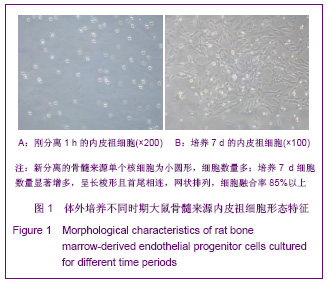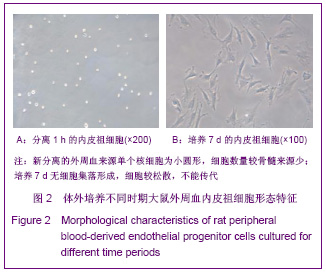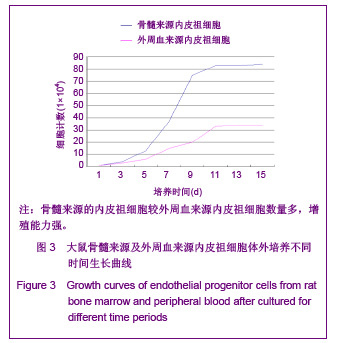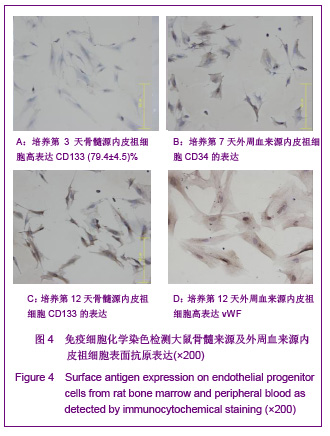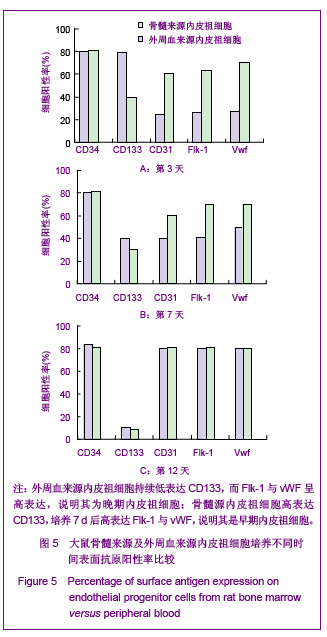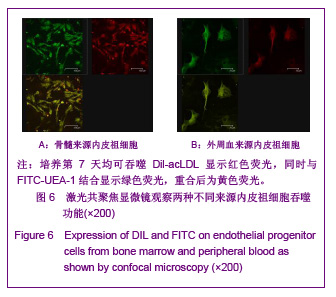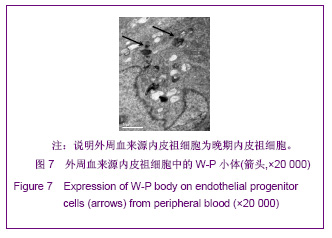中国组织工程研究 ›› 2013, Vol. 17 ›› Issue (6): 1064-1068.doi: 10.3969/j.issn.2095-4344.2013.06.019
• 干细胞培养与分化 stem cell culture and differentiation • 上一篇 下一篇
大鼠骨髓与外周血来源内皮祖细胞生物学特性比较
曹广煜,陈庆伟,李兴升,杨 彦,李桂琼
- 重庆医科大学附属第二医院老年科,重庆市 400010
Biological characteristics of rat peripheral blood versus bone marrow derived endothelial progenitor cells
Cao Guang-yu, Chen Qing-wei, Li Xing-sheng, Yang Yan, Li Gui-qiong
- Department of Gerontology, Second Affiliated Hospital of Chongqing Medical University, Chongqing 400010, China
摘要:
背景:内皮祖细胞不仅参与胚胎血管生成,也参与出生后血管发生和血管内膜损伤后修复,对治疗缺血性疾病意义重大,但目前对内皮祖细胞的分离、培养、鉴定还存在争议。 目的:体外分离、培养大鼠骨髓与外周血来源的内皮祖细胞,并比较其生物学特性。 方法:密度梯度离心法分离SD大鼠骨髓和外周血单个核细胞,接种于纤维连接蛋白铺被的培养瓶中贴壁培养,用加入血管内皮生长因子、碱性成纤维细胞生长因子及表皮生长因子的完全培养基诱导培养,对获得的贴壁细胞进行细胞形态学,免疫细胞化学染色,流式细胞仪,透射电镜,以及Dil-acLDL、FITC-UEA-1双荧光染色法检测。 结果与结论:骨髓来源的内皮祖细胞数量多,集落状生长,增殖能力强;外周血来源的内皮祖细胞数量较少,散在生长,消化后能贴壁但不能传代。两种不同来源的内皮祖细胞免疫细胞化学检测贴壁细胞CD133、CD34、Flk-1、Ⅷ因子在不同时段呈阳性表达;激光共聚焦显微镜观察,Dil-acLDL、FITC-UEA-1均为双染。透射电镜检查外周血来源的内皮祖细胞发现W-P小体。提示大鼠骨髓和外周血均能分离培养出内皮祖细胞,但前者是早期内皮祖细胞,后者为晚期内皮祖细胞,两者生物学特性各不相同。
中图分类号:
